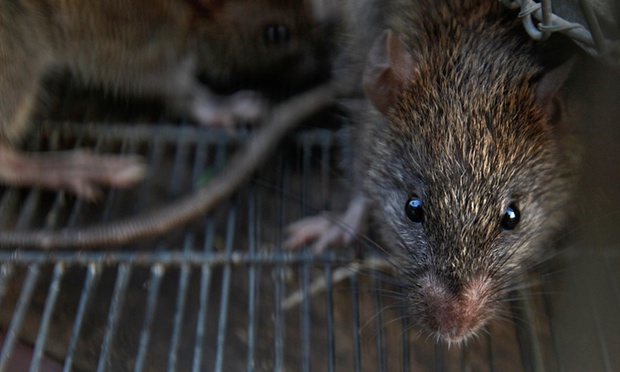Biologists have shown the effectiveness of electroacupuncture in rats

Biologists from Georgetown Medical School using stimulation of one of the known acupuncture points on the body of rats stimulated the work of the hypothalamic-pituitary-adrenal axis. The reaction of the organism in rats that were in a stressful situation due to cooling turned out to be similar to the response of the organism to certain antidepressants and sedatives. According to scientists, the results of the work suggest that the effect of acupuncture can be more than just a placebo effect.
Acupuncture is a medical procedure that came to us from ancient China. Treatment sessions are carried out by introducing special needles at special points on the human body. In traditional Chinese medicine, it is believed that the qi life energy ducts pass through the body, and literally all the problems of the body are associated with the disruption of the current of this energy, which spreads along special lines called meridians.
')
Scientific research accumulated over a long period of time, which tried to confirm or disprove the healing power of acupuncture, generally agrees that the effect of this procedure is similar to the placebo effect . Simply put, the patient would have recovered as well. In addition, the effectiveness of the procedures strongly depends on the “operator” - that is, on the person who conducts it. Also, the effectiveness of the atmosphere affects the procedure, special preparations, and other surroundings.
In human anatomy, which is currently quite well ( although not entirely ) investigated, the “magic points” indicated by ancient treatises are not distinguished by anything special. In addition, in some cases, acupuncture has done more harm than good - from the refusal of patients to treat serious diseases with modern methods and ending with the use of contaminated needles.

The results, which biologists have achieved in a study on rats, were clearly not caused by the placebo effect. However, in the study they used not ordinary needles, but electric ones, which have an additional effect on the body. As the point of impact was chosen so-called. St36 - "gastric meridian point." It is located on the lower leg, but, according to traditional medicine, it affects digestion.
The axis of the hypothalamus-pituitary-adrenal glands ( HGN ) is a complex set of relationships and signals between the hypothalamus, pituitary, and adrenal glands. When the brain receives information about any abnormal situation (stress), the hypothalamus, located in the brain, secretes a special hormone that conveys the message further to the pituitary gland, physically connected to the hypothalamus.
He produces another hormone that is in a hurry to deliver the news to the adrenal glands, located - correctly, above the upper poles of the kidneys. The hormone induces the adrenal glands to produce cortisol. Among other things, cortisol boosts blood sugar and prepares the body for the expected “fight or flight” response. Adrenal glands (in English they are called adrenal gland) release adrenaline, which increases heart rate and blood pressure.
This continues until our hormones reach the levels our body needs, and then a series of chemical reactions begin to turn them off. For example, cortisol, released by the adrenal glands, suppresses the hypothalamus and pituitary gland (so it stops sending a signal to get more cortisol). Thus, the operation of the HGN circuit is also provided by feedback. This complex system of production and slowing down the production of hormones and regulate drugs, in particular, some antidepressants and sedatives.
“This study is the culmination of several works that demonstrate how acupuncture can influence a person’s body and lower levels of stress and pain, and eventually depression,” says Dr. Ladan Eshkevari, a leading expert in this work. “We’ve found a mechanism that can do this, and now we’ll see blind clinical trials in humans using a placebo.”
Successfully discovering and examining the mechanisms that will allow the human body to be controlled by non-drug methods, scientists will make a breakthrough in the treatment of diseases, reducing the side effects of treatment.
Source: https://habr.com/ru/post/367755/
All Articles